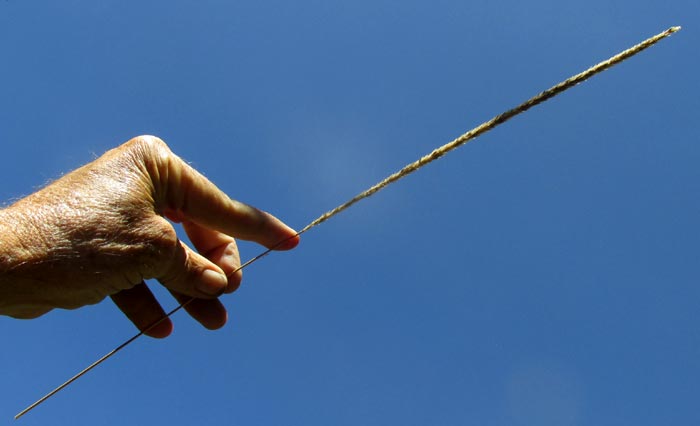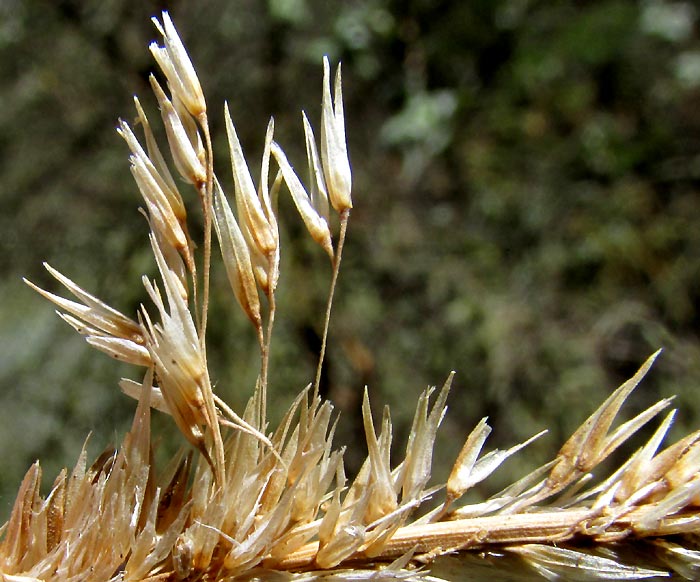Excerpts from Jim Conrad's
Naturalist Newsletter
entry from field notes dated April 15, 2022, taken in disturbed/reforesting borderline cloudforest within 1km of Valle de los Fantasmas, elevation ±2,320m (7600 ft), with limestone bedrock; about 40kms (24 miles), straight-line, ESE of San Luis Potosí, San Luis Potosí state, MÉXICO, (N22.06°, W100.62°)
DRY SEASON DEERGRASS

On the upper slope of a shallow limestone sinkhole, the above big bunchgrass's long, wiry blades flowed toward the sinkhole's bottom. At first I didn't think I'd ever be able to identify the grass, but then I noticed that the tallest parts were old flower clusters, or inflorescences, shown below:

The inflorescence is unusually long and slender. At this distance it looks like a spike-type flower cluster, the individual grass spikelets arising directly from the stem without any stalks, or pedicels, but parts of the spike could be teased away from the main rachis, as shown below:

It's a panicle-type inflorescence, with spikelets on branches of branches from the main rachis, which runs horizontally across the above picture. All the caryopsis-type fruit-grains have been eaten or dispersed, but with what's left here during the driest part of the late dry season, there's enough left to try to identify the grass to species level.
First of all, I'd seen large, perennial bunchgrasses with wiry, flowing leaves and tall, inflorescences before, so I had a starting point: They were species of the genus Muhlenbergia, a big genus mainly occurring in the Western Hemisphere, embracing about 155 species. In North America, 70 species are documented, with about twice that number in Mexico.
Despite having so many species to distinguish our grass from, our plant is unusual for its size and extremely slender inflorescences, and those features dintinguish our species from the vast majority of others. Also, even with the individual florets missing, there are these distinctive features:
All the above features suffice to lead us to what in English often is called Deergrass. It's MUHLENBERGIA RIGENS. It's graced with an English name because it's native as far north as California to Texas, though mostly it's a Mexican species distributed throughout northern Mexico south mostly in the western states, to Puebla state in south-central Mexico.
Deergrass's preferred habitats are described as sandy washes, gravelly canyon bottoms, rocky drainages (like our sinkhole slope) and moist, sandy slopes. Its handsome form and adaptations to extended dry periods have made it a favorite for many with "desert gardens." A number of horticultural cultivars have been developed. The species is described at the Calscape.Org website as "... one of the most beautiful and probably the easiest to grow of all the native California bunchgrasses ..."